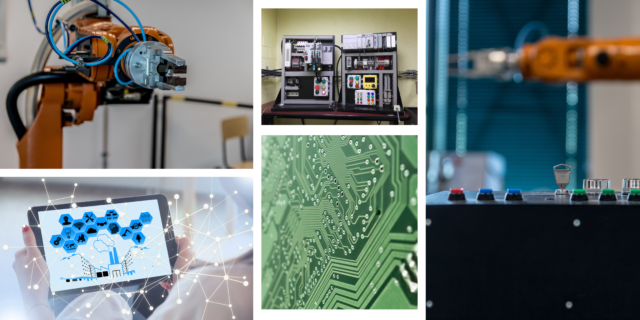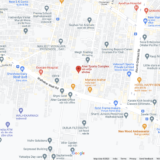Robotics and Automation Solutions
Industry 4.0 is the latest buzzword in the manufacturing industry. It’s a way to increase efficiency and productivity by using digital technology to connect machines, processes, people, and data.
Industrial Automation
We undertake Industrial Automation Projects & We provide end-to-end service in the field of Industrial Automation. Including engineering, procurement, installation & Commissioning on a turnkey basis Control systems including PLC, SCADA, and DCS with commissioning assistance Supply of automation products like PLC, HMI, VFD, AC Motors, Soft Starters, etc Services for detailed engineering, retrofitting/revamping and AMS.
We utilize the latest innovations in technology to provide better engineering solutions, which can offer our customers maximum potential for increasing productivity with safety. We have installed and commissioned SCADA, DCS, and redundant systems for various projects. SAPL is a highly professional and fast-growing company.
We offer PLC Control systems,AC and DC Drive control systems
SCADA,MIS
Our Solutions Include:
- Design & Engineering, Erection & commissioning, Electrical & Electronics Instrumentation
We design and develop customized control panels and automation systems incorporating a range of PLCs, Drives, SCADA, and another popular band of switchgear and control gear equipment. We offer the following range of services in Industrial Automation:
Study the process and customer requirements,
- Selection of PLC
- AC/DC Drives and other components
- Development of PLC software
- Design the Control Panel
- Integration of the system
- Installation at customer premises
- Training to customer Engineers/Technicians.
Manufacturing Range:
- DCS, PLC Panel, IPC-based control system
- SCADA Panel & DCS Panel
- AC/DC Drive Panel
- MCC Panel & PCC Panel
Key Components of Industry 4.0
Additive Manufacturing
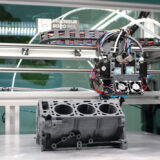
Additive manufacturing is a process that builds 3D parts by depositing layers of material, usually metals or plastics. This technology, called “3D printing” or “rapid prototyping,” gives you the power to design and build anything imaginable.
It allows companies to quickly produce prototypes and short-run production parts with greater precision than traditional subtractive methods like milling or turning.
Augmented Reality
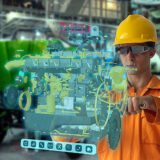
In augmented reality, computer-generated sensory input is used to enhance a live view of a real-world setting by adding sound, video, graphics, or GPS data.
It superimposes computer-generated imagery (CGI) and real-world physical objects, enabling the viewer to interact with their environment in mixed reality.
The technology overlays digital information on an image of something being viewed through a camera on a device such as a smartphone or a tablet. The resulting effect is similar to looking at the physical world but seeing elements of it enhanced by computer graphics.
Autonomous Robots
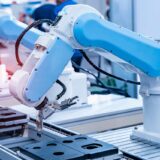 Autonomous robots can perform tasks on their own, without human interaction. They can be programmed to perform specific tasks or to operate autonomously.
Autonomous robots can perform tasks on their own, without human interaction. They can be programmed to perform specific tasks or to operate autonomously.
The main reason why manufacturers want autonomous robots is that they can increase productivity while decreasing error rates and production costs. A robot can be programmed to perform a repetitive task without deviating from its course or making mistakes.
They do not require breaks like humans do, which means they can work 24 hours a day without stopping for food or sleep (although there will still be maintenance periods where technicians must attend).
This gives manufacturers access to around-the-clock production capacity and increased flexibility when scheduling production runs.
Big Data and Analytics

Big data refers to large, complex datasets that are often too large to be processed by traditional database applications or software.
It is a method for analysing large amounts of data to identify patterns and opportunities and make informed decisions to gain business intelligence.
This can be used to generate new ideas for products or services by analyzing customer purchase patterns over time and comparing them with similar patterns from other industries (e.g., movies vs. video games). This helps companies better understand what customers want and how best to serve them to increase sales revenues.
Cloud Computing
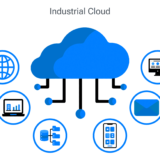 Cloud computing has become the most important element of Industry 4.0 because it makes it possible to store, process, and share data in real-time. But what exactly is cloud computing?
Cloud computing has become the most important element of Industry 4.0 because it makes it possible to store, process, and share data in real-time. But what exactly is cloud computing?
It is a technology that enables organizations to store data remotely and access this data from any location or device. This means that users can access their files from any device connected to the internet.
Cloud computing also allows organizations to perform various tasks such as emailing, storing documents, sharing information with colleagues, etc. Additionally, it will enable companies to save money on hardware costs by renting space on other networks instead of purchasing expensive servers and storage devices.
Cyber Security
 A cyber attack can lead to significant losses for any business, depending on its size and the industry sector.
A cyber attack can lead to significant losses for any business, depending on its size and the industry sector.
The term “cyber security” refers to policies designed to protect computer systems from unauthorized access, change, or destruction involving malicious intent by hackers or criminals.
The main goal of cyber security is to keep information safe from unauthorized access, modification, or destruction by detecting potential threats. It will take measures such as encryption or security patches for software fixes on operating systems and applications that can be installed automatically or manually, depending on how critical they are for an organization’s operation.
Digital Twin
Digital Twin is a virtual representation of a physical product. It allows to virtually simulate and predict the behavior of the real product in manufacturing processes, service life cycle, and maintenance.
The Digital Twin concept is a key component of Industry 4.0 because it allows manufacturers to test their products in real-time rather than waiting until they’re finished to see how they perform in the real world.
It also enables manufacturers to better understand their products, which will help to optimize production processes, cut costs, reduce waste, and increase efficiency while ensuring compliance with regulations.
The Internet of Things (IoT)
IoT is regarded as a sub-sector of information technology that consists of a network of physical devices connected via software and hardware, allowing them to communicate with one another and exchange data over the internet (and/or other networks).
The IoT is expected to significantly impact business, transforming how companies do business by making it easier to collect data from their operations and managing their assets more effectively. The IoT will also change how consumers live as they control their homes directly through an app or voice command.
Simulation
Simulation is a process of developing a model or a virtual copy of the real world, which can be used to predict future outcomes without actually performing the experimentation in real life.
The concept of simulation is central to the fourth industrial revolution (Industry 4.0) because it allows companies to make better-informed decisions before they take action.
At its core, the simulation will enable companies to test their assumptions about how their products or processes will perform in different environments before making any changes.
System Integration
System integration is about connecting all the different systems involved in a manufacturing process. This allows them to communicate with each other to optimize operations.
The integration of different machines and systems within an organization can help enhance productivity and efficiency. It also helps reduce costs by implementing better visibility options into operations which increases the accuracy of production processes.
Address
next to Aher Sports Complex,
Sector No. 32, Pune – 411033
Maharashtra, India


